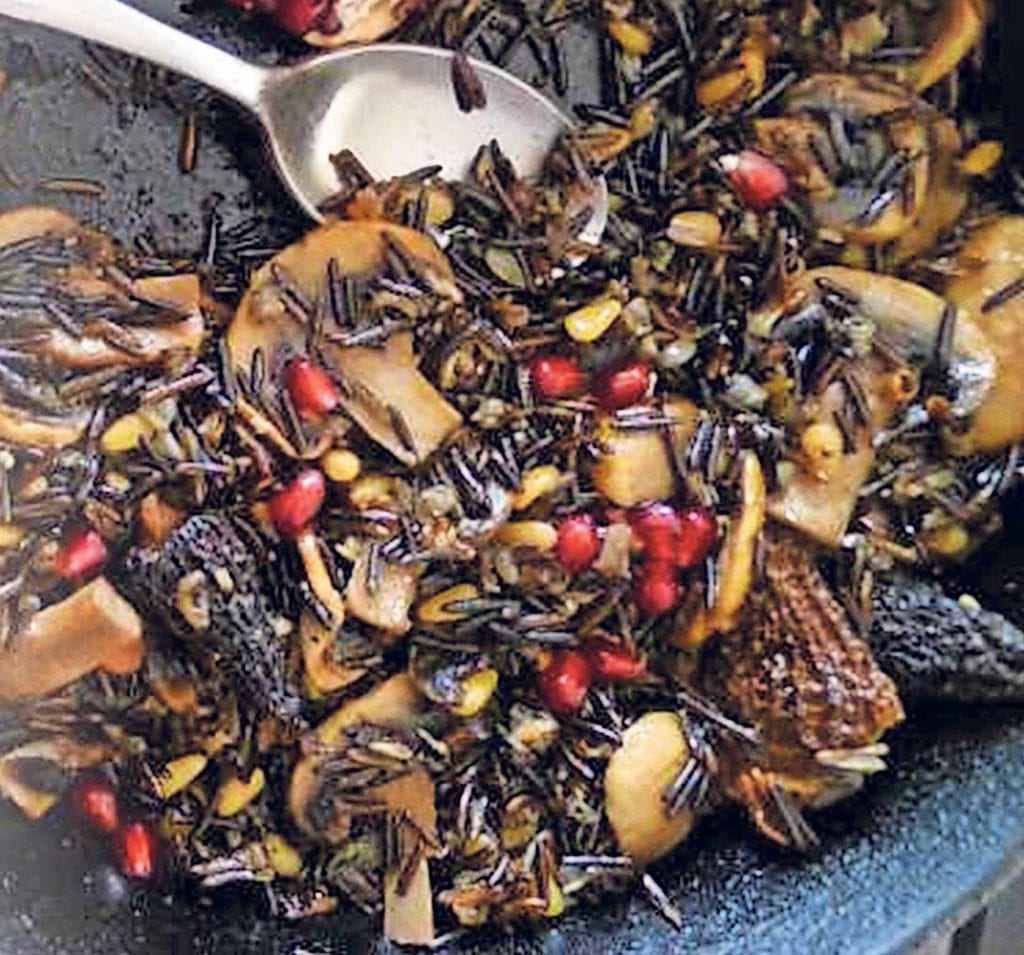
Wild rice isn’t actually rice, but the kernel of a large aquatic grass native to the lake country of northern Minnesota and Wisconsin, extending into Canada. Like the people of that northern landscape, it’s rugged and earthy, with more character than its soft, domesticated counterpart. Wild rice has a nutty tea-like flavor, and a texture that pushes back when you chew.
Hand-harvested wild rice is hard to find, and expensive when you do. Farmers have figured out how to cultivate wild rice in paddies, the same way real rice is grown. Today, almost all of the wild rice sold is paddy-grown and machine-harvested, mostly in California. To find the real wild stuff, you need to find a ricer who is willing to sell you some.
The wild rice community is divided over this domesticated wild rice. Vander Puy says the paddy-grown stuff isn’t comparable to hand-gathered wild rice in terms of flavor, texture and overall performance in the kitchen. As a seller of wild rice and friend to many more, he laments the fact that paddy-grown rice has disrupted the market for the real stuff, which costs twice as much.
Most people cook wild rice until it’s soft enough to eat, but some prefer to soften it with an overnight soak. Hand-gathered wild rice tends to soften (and cook) more quickly than paddy-grown wild rice.
However long it takes to soften, soaking wild rice is worth a try. The flavor of soaked, uncooked wild rice is milder than that of cooked wild rice. You can wash down your chewy mouthfuls with sips of the earthy, fragrant soaking water, like swallowing a pristine lake in the middle of the forest. For extra vibrancy, add a handful of pomegranate seeds. The juicy fruits will burst as you chew them with the hearty rice, adding their tartness to every bite, like little sips of wine.
If the soaking method fails to soften the rice enough, you can always cook it. For years, my go-to preparation was to mix it, still hot, with smashed garlic, sesame oil and soy sauce, and garnish with chopped scallions. The heat of the rice cooks the garlic enough to remove the edge, for a flavor that’s exciting and comforting.
I also prepare a wild rice with mushroom dish I learned from a wild-mushroom picker, while camping near Montana’s Blackfoot River. Eating wild foods in wild places is a special experience that’s hard to replicate anywhere else. But even cooked indoors, on a stove top, with domestic ingredients, this dish will channel the wild side of rice into your kitchen.
Morel Camp Wild Rice
Serves 6
- 1 cup wild rice
- 2 tablespoons butter
- 2 tablespoon olive oil
- 2 cloves of garlic, smashed
- 2 tablespoons pine nuts
- 2 cups chopped mushrooms (a mix of varieties is ideal)
- ½ teaspoon salt
- ¼ teaspoon of fresh ground pepper
- ½ cup pomegranate seeds
Prepare the rice the day before. Add a cup of wild rice and two cups of water (or stock) to a pot with a tight-fitting lid. Soak overnight.
Reserving some of the rice water, simmer rice on medium-low or bake at 350 degrees F for 30 minutes. Check progress. If the liquid is nearly gone and the rice remains hard, add more liquid. Keep checking, adding more liquid when necessary, until the grains split, curl and bloom like tiny brown and white flowers. Continue cooking until all moisture is gone, but don’t allow the rice to dry out.
Combine butter and olive oil in a large skillet or wok on medium heat. Add the pine nuts and mashed garlic. Cook just until they start to brown. Don’t overbrown. If the pan gets too dry at any point, deglaze with reserved water from the rice.
Add the mushrooms and stir. Season with the salt and pepper. When the fungus starts to brown and weep, add the cooked rice, stirring gently.
Transfer the rice onto a large plate. Garnish with pomegranate seeds, and keep more pomegranate seeds on hand to sprinkle on as a condiment.






